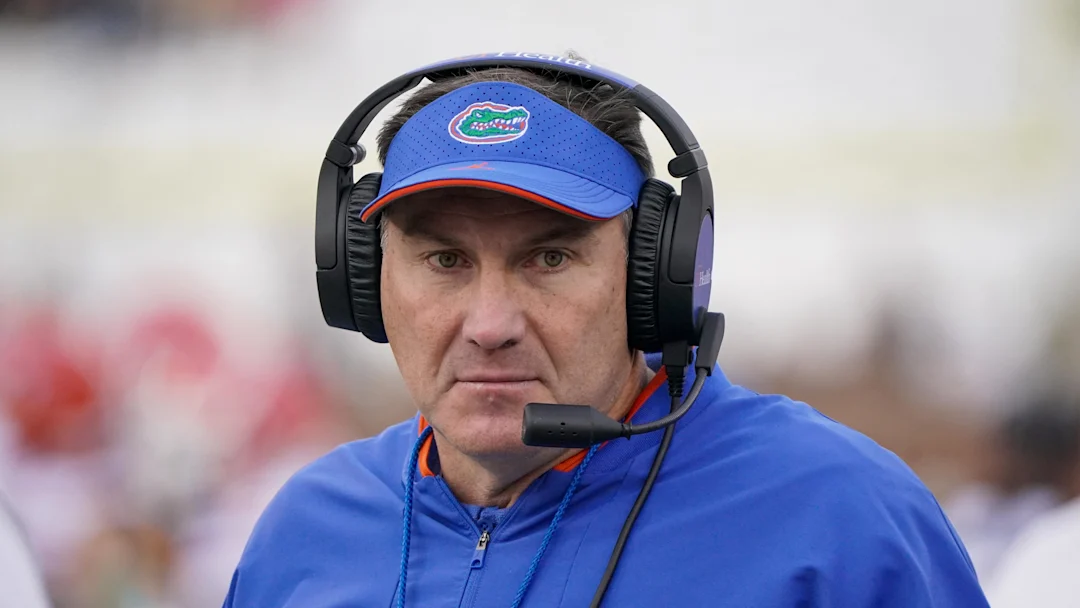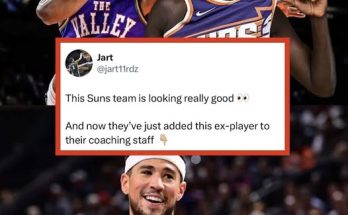Dan Mullen, the former head coach of the Florida Gators and current college football analyst, is never one to shy away from speaking his mind. Known for his candid takes and sharp football intellect, Mullen recently made waves with a surprising admission that turned heads across the college football landscape. During a segment where he discussed the evolution of various programs, Mullen pointed to one unexpected area where he believes the University of Nevada, Las Vegas (UNLV) has a clear and definitive edge over the University of Florida: facilities.
Mullen, who spent four seasons at the helm in Gainesville and led the Gators to three New Year’s Six bowl games, didn’t hesitate to praise UNLV’s recent investments in athletic infrastructure. And while the SEC is widely regarded as the pinnacle of college football, both in talent and resources, Mullen admitted that when it comes to the quality and innovation of facilities, UNLV has not only caught up to programs like Florida—they’ve surpassed them in some ways.
His comments came as part of a larger discussion on the growing competitiveness of Group of Five schools and how the gap between so-called “power programs” and lesser-known universities is narrowing. But it wasn’t just an offhand remark. Mullen was emphatic, stating that the Rebels’ state-of-the-art facilities—including their use of Allegiant Stadium and the Fertitta Football Complex—represent a bold new direction for programs outside of the traditional power structure.
Allegiant Stadium, home to the NFL’s Las Vegas Raiders, also serves as the game-day home for UNLV football. The $1.9 billion venue is widely considered one of the most impressive stadiums in all of sports, let alone college football. While Florida’s Ben Hill Griffin Stadium—The Swamp—is iconic and rich in tradition, it lacks the modern edge and luxury amenities that make Allegiant such a recruiting weapon for UNLV.
It’s not just about flash, either. Mullen highlighted how the use of a professional-caliber stadium offers tangible benefits to athletes. The turf, lighting, locker rooms, recovery rooms, and media areas are all top-tier. UNLV players get to compete in an NFL-level environment, an experience that few college programs can replicate, especially those outside the SEC.
Mullen also praised the Fertitta Football Complex, which opened in 2019. This $34.8 million facility offers everything from hydrotherapy pools and advanced weight training systems to futuristic film rooms and meeting spaces designed to streamline every aspect of a player’s development. The complex is a reflection of the university’s commitment to building a serious football program—one that can no longer be dismissed as an afterthought.
For Mullen to publicly admit that UNLV’s facilities “blow Florida’s out of the water,” as he put it, is a bold declaration. And it speaks volumes about how quickly the landscape is changing in college football. Programs that once relied purely on history, tradition, and brand power are being pushed by universities with vision, investment, and the drive to catch up—and even surpass—the elite.
Of course, Florida is no stranger to success. The Gators boast multiple national championships, a storied list of NFL alumni, and one of the most passionate fan bases in America. But in the ever-changing world of recruiting, optics matter. Young players are drawn to programs that feel cutting edge. And with name, image, and likeness (NIL) opportunities now a part of the equation, the overall appeal of a program’s infrastructure can be the difference between landing or losing a top recruit.
Mullen’s comments underscore a growing reality—recruiting battles aren’t just being fought on the field or through television exposure. They’re being won and lost in weight rooms, locker rooms, and recovery centers. When recruits step foot on a campus and see professional-grade facilities, it resonates. And in that regard, UNLV is punching far above its weight.
Mullen also touched on how Las Vegas itself adds a unique element. While Gainesville offers the classic college-town charm, Vegas provides a dazzling, urban experience with countless opportunities. With NIL growing more influential by the year, the marketing and branding potential in Las Vegas could be a major draw for prospects who think beyond football. The city’s entertainment industry and corporate presence make it an ideal location for athletes looking to build their personal brands.
Mullen’s tone wasn’t critical of Florida, but it was undeniably eye-opening. He acknowledged that schools like Florida, despite their tradition and resources, need to continue investing aggressively if they want to remain ahead of the curve. “The Swamp is legendary,” Mullen said, “but legends need updating too.”
His comments come at a time when Florida is indeed planning renovations to Ben Hill Griffin Stadium. The Gators have announced a $400 million stadium renovation project, which includes upgrades to seating, restrooms, concessions, and more modern amenities. But construction hasn’t yet begun, and timelines remain fluid. That leaves the door open for schools like UNLV to continue gaining ground.
Recruiting is an arms race, and in Mullen’s eyes, UNLV has loaded up with some serious firepower. He emphasized that even though the Rebels don’t play in a Power Five conference, their infrastructure reflects that of a high-end Power Five program. That kind of investment signals to recruits—and to the broader college football world—that UNLV is serious about ascending the national ranks.
Mullen’s comments should serve as a wake-up call for programs resting on their laurels. The traditional powerhouses can no longer afford to coast on history. The game is evolving, and schools that adapt quickly are reaping the rewards.
For UNLV, the praise couldn’t come at a better time. Head coach Barry Odom has the program headed in the right direction, and with continued momentum both on the field and behind the scenes, the Rebels could be poised for a true breakthrough. Mullen’s validation adds credibility, especially given his SEC background and experience with top-tier programs.
What’s also worth noting is how these shifts could eventually affect conference realignment. As Group of Five schools build themselves into more competitive operations, the lines separating them from Power Five programs continue to blur. Facilities, coaching, NIL, media rights—everything is in play now. And in the battle for relevance, those with the infrastructure to support big-time football will find themselves in better position when the next round of realignment inevitably hits.
Florida, for its part, remains one of the most powerful brands in college football. But Mullen’s remarks reveal that even programs of its caliber have work to do if they want to stay at the top. The game is no longer just about tradition or even winning seasons—it’s about creating an environment where players can develop, compete, recover, and market themselves at the highest level possible.
Mullen’s surprising admission might ruffle some feathers in Gainesville, but it’s a brutally honest take from someone who knows the ins and outs of the program. And it might just be the kind of truth that Florida and other traditional powers need to hear. Because while tradition builds legacies, innovation secures futures—and right now, UNLV is building one brick at a time.

